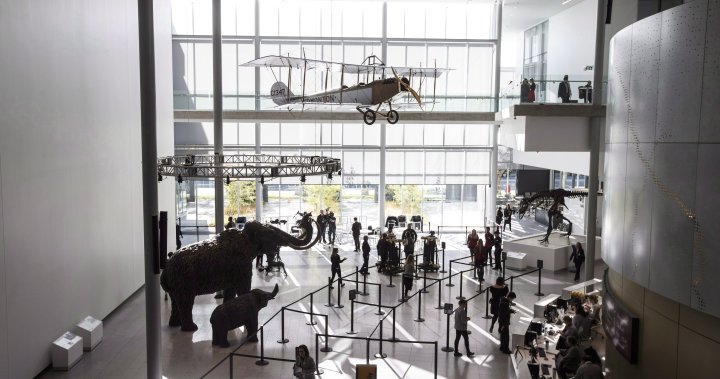I stepped into the sandstone fortress of the Royal Tyrrell Museum just as a group of wide-eyed children gathered around a towering Albertosaurus skeleton. Their collective gasp echoed through the hall as their guide explained this predator once hunted across the very land where we now stood. It’s moments like these—where past and present collide—that make Alberta’s cultural institutions so vital to our understanding of who we are and where we come from.
Now, these transformative experiences will become more accessible to both locals and visitors through the province’s newly announced Alberta Museum Pass initiative.
The program, unveiled yesterday by Alberta’s Minister of Tourism and Sport Joseph Schow, aims to boost cultural tourism while making the province’s rich heritage more affordable for families. The pass will provide unlimited admission to 21 provincial historic sites, museums, and interpretive centers for a full year at $90 for families—less than the cost of two separate visits to many participating attractions.
“This is about connecting Albertans with their story,” Schow explained during the announcement at the Royal Alberta Museum in Edmonton. “We have world-class facilities that showcase everything from dinosaurs to oil sands technology, from Indigenous heritage to pioneering settlements. The Alberta Museum Pass makes experiencing this diversity of history more affordable.”
Tourism officials expect the initiative will generate an additional $15 million in visitor spending across the province while encouraging Albertans to explore beyond their immediate communities. The economic calculation makes sense—museum visitors typically spend money on meals, accommodation, and other attractions during their trips.
For communities like Drumheller, where the Royal Tyrrell Museum draws over 450,000 visitors in a typical year, such initiatives can be economic lifelines. Heather Davis, who owns a small café near the museum, told me that summer tourism sustains her business through the quieter winter months.
“When families come to see the dinosaurs, they need to eat, they buy souvenirs, maybe stay overnight,” Davis said while preparing sandwiches in her bustling kitchen. “Each visitor represents real dollars in our community.”
The pass includes iconic institutions like the Royal Tyrrell Museum, the Royal Alberta Museum, and Head-Smashed-In Buffalo Jump, a UNESCO World Heritage Site that preserves 6,000 years of Plains Indigenous culture and history. Also covered are smaller but equally significant sites like the Ukrainian Cultural Heritage Village and the Brooks Aqueduct.
But some critics question whether the initiative goes far enough. Morgan Fitzgerald, executive director of the Alberta Museums Association, praised the program while noting it excludes many community museums that operate independently from provincial funding.
“We have over 300 museums across Alberta, most run by passionate volunteers and small staffs,” Fitzgerald said. “While this pass is wonderful for provincial sites, we need to remember that local museums are often where communities preserve their most intimate histories.”
Indigenous tourism operators see both opportunity and limitation in the program. Tarra Wright Many Chief, executive director of Indigenous Tourism Alberta, appreciates the inclusion of sites like Head-Smashed-In Buffalo Jump but hopes future expansions will incorporate more Indigenous-led experiences.
“True cultural tourism must include Indigenous voices telling their own stories,” Wright Many Chief explained during a phone conversation. “While provincial museums do important work, there’s no substitute for learning about Indigenous heritage from Indigenous peoples themselves.”
The initiative arrives as Alberta’s tourism sector continues its post-pandemic recovery. According to Travel Alberta, the province saw 34 million person-visits in 2022, generating $8.2 billion in tourism expenditures—still below pre-pandemic levels but showing strong recovery momentum.
For families struggling with inflation, the pass offers significant savings. At current admission rates, a family would spend approximately $50 for a single visit to the Royal Tyrrell Museum and nearly $60 for the Royal Alberta Museum. With the $90 annual family pass covering unlimited visits to all 21 sites, a family could potentially save hundreds of dollars over a year of cultural exploration.
Claire Thompson, a teacher from Calgary and mother of three, plans to purchase the pass immediately. “We’ve wanted to take the kids to these museums, but honestly, when you multiply admission by five people, it gets expensive quickly,” she said. “With this pass, we can make impromptu day trips without worrying about the cost each time.”
The pass will be available starting June 1 through the provincial government website, at participating museums, and at Travel Alberta visitor information centers. Individual passes will cost $40, while senior passes will be available for $30.
As I watched those children at the Tyrrell Museum transition from exhibit to exhibit, their curiosity visibly growing with each discovery, I was reminded why these cultural spaces matter so fundamentally. Museums aren’t just repositories of artifacts—they’re where we collectively remember, question, and imagine.
If this new initiative brings more Albertans into conversation with their complex heritage—from ancient geology to recent immigration stories—it may prove valuable beyond any economic impact report could measure. After all, understanding where we’ve been has always been the first step in charting where we’re going.






